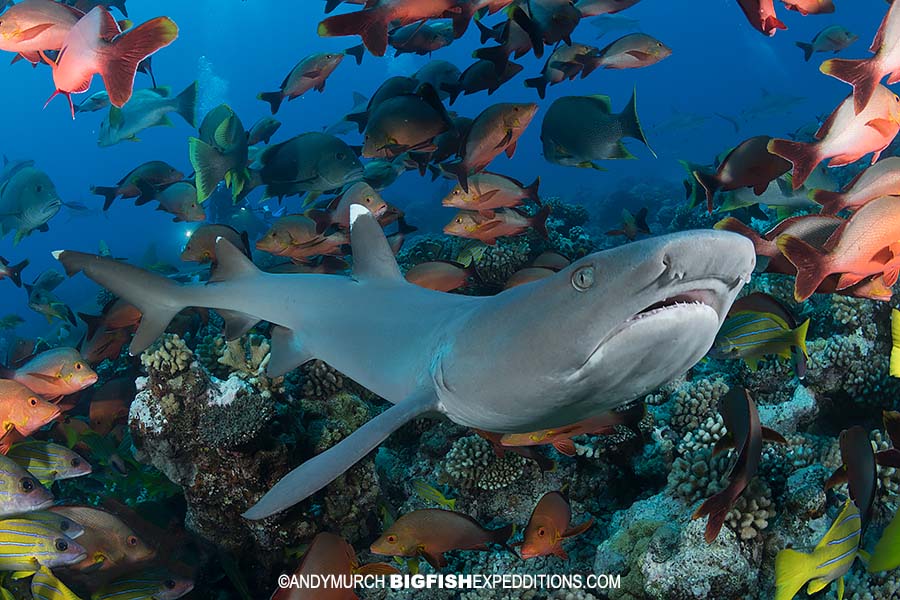Nuku Hiva 2020 in a Nutshell
Another great big animal trip to the Marquesas Islands
This year we snorkeled with melon-headed whales and dove with lots of reef mantas, plus scalloped hammerhead sharks, oceanic blacktip sharks, grey reef sharks, Indo-Pacific Blacktip Reef Sharks, Tahitian stingrays, and blotched rays. We also dove on extremely healthy reefs covered in schooling fishes, countless morays, and much, much more.
And that doesn’t include the pre-trip shark diving that we did on Tahiti!
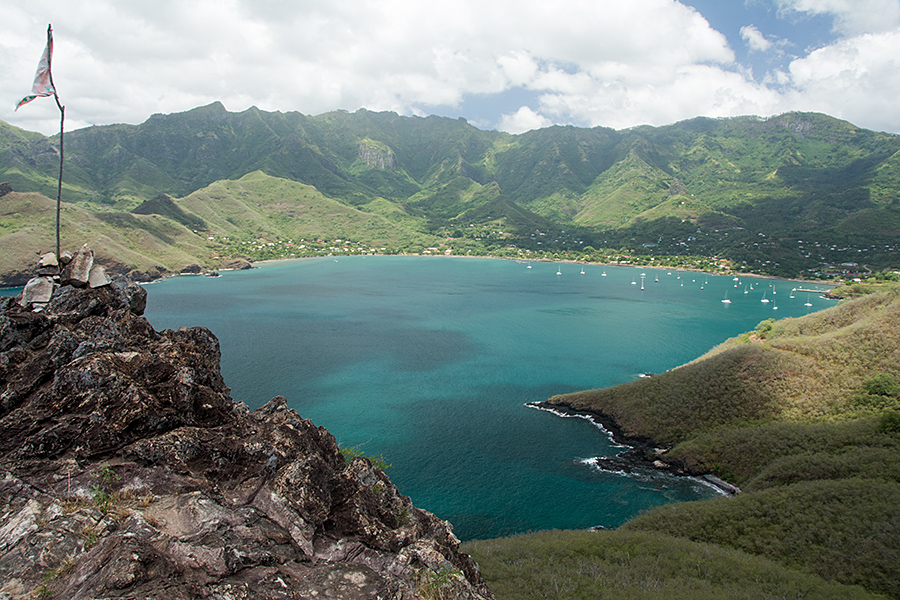
Melon-headed Whales
On our first day, we had a phenomenal encounter with a large pod of playful melon-headed whales; locally called pepinos.
Melon-headed whales are actually overgrown dolphins; just like killer whales or pilot whales. Like many dolphin species, they were initially very curious about the primates that had come to visit them. Once they lost interest in our pathetic attempts to keep up with them, the captain entertained them by driving the boat in large circles. While the whales frolicked in the ship’s pressure wave, we rested in the centre, snapping images whenever they came close enough. It was a great opportunity to take images of a cetacean species that few divers get to see.
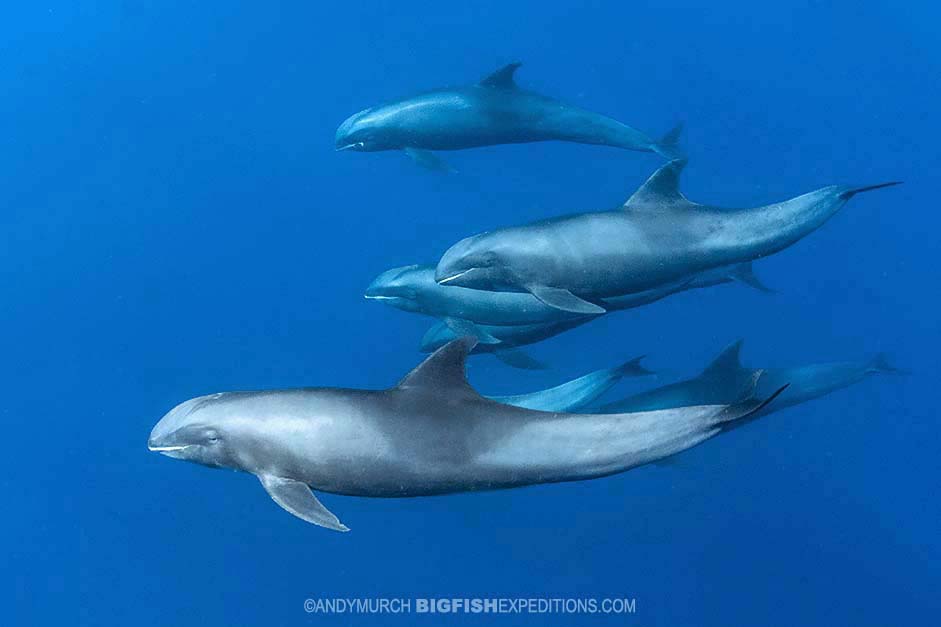
Resident Pod
There are around 300 melon-headed whales that live off the coast of Nuku Hiva, making it the best place on the planet to see this elusive species. I estimate that the pod we snorkelled with had around 50 or 60 animals in it; more than enough for us to get some nice group shots.
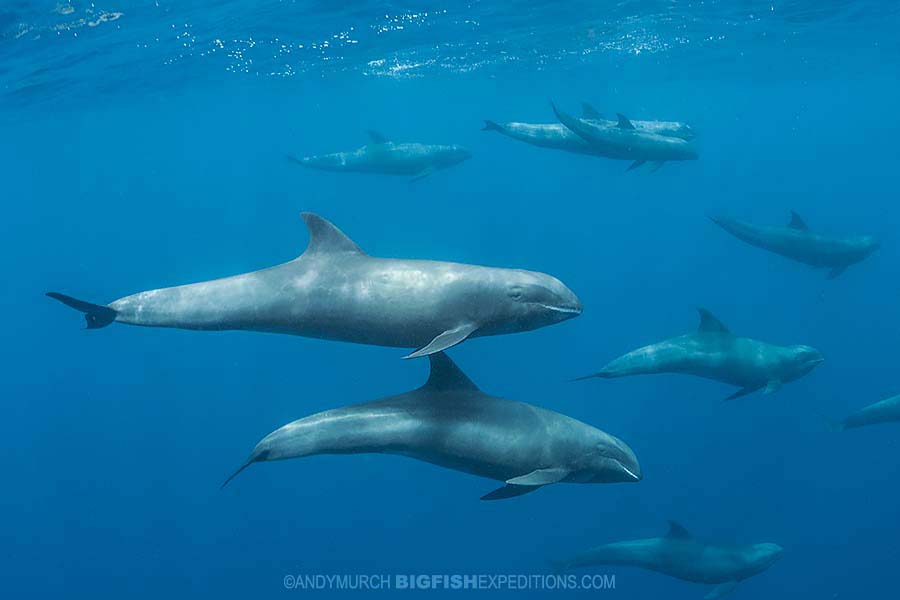
Friendly Reef Mantas
Later in the week, we returned to our melon-head spot but the wind had caused a lot of surface chop so we had trouble locating them. Fortunately the wind did not affect our dive schedule, so we were still able to enjoy two excellent reef dives every morning on the protected east coast of the island.
On the dives we had encounters with a good variety of sharks but the stars of the reef were the enormous, slow-swimming reef mantas that often approached us very closely.
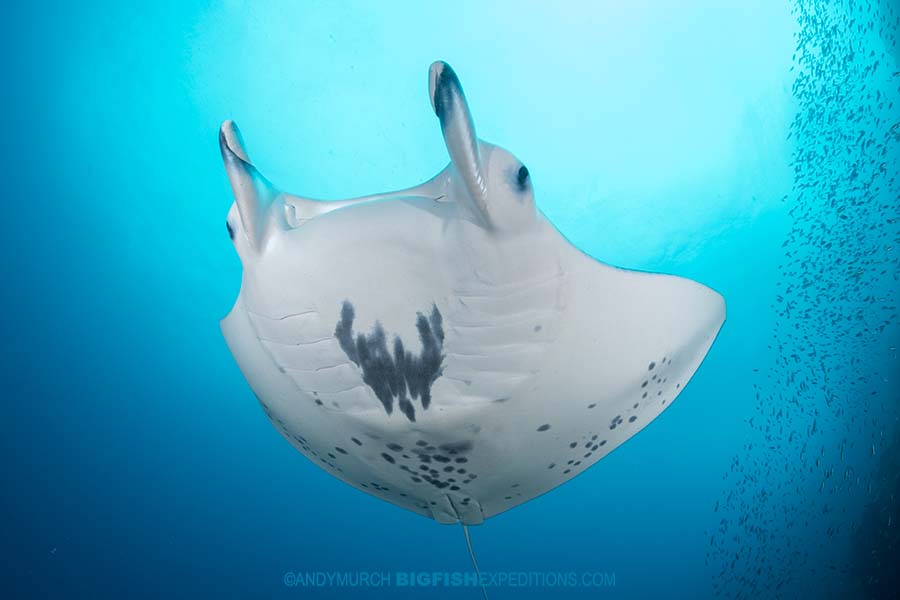
Sharks of Nuku Hiva
As in previous years, we visited a number of sites that attract scalloped hammerheads. Although we saw individuals and small groups a few times, they were annoyingly aloof – a behavior that is not unusual for this timid species. Fortunately, there were plenty of other sharks to see, including much bolder blacktip reef sharks that regularly buzzed us as we worked our way along each reef.
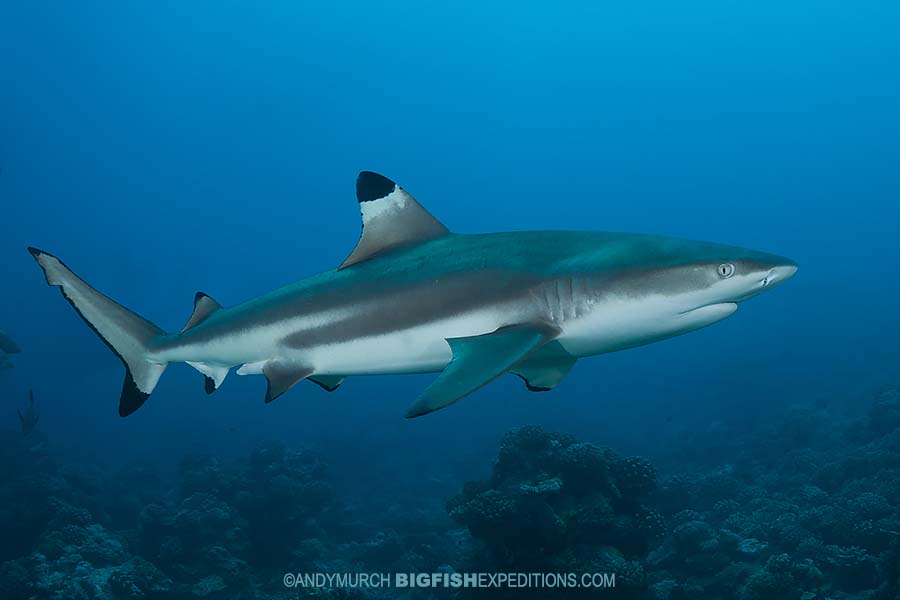
Denizens of the Reef
Between big animal encounters, we explored the nooks and crannies where morays, lobsters, octopuses and other denizens of the reef went about their daily routine of hunting for food, getting spruced up by their entourage of cleaner shrimp and generally avoiding predators.
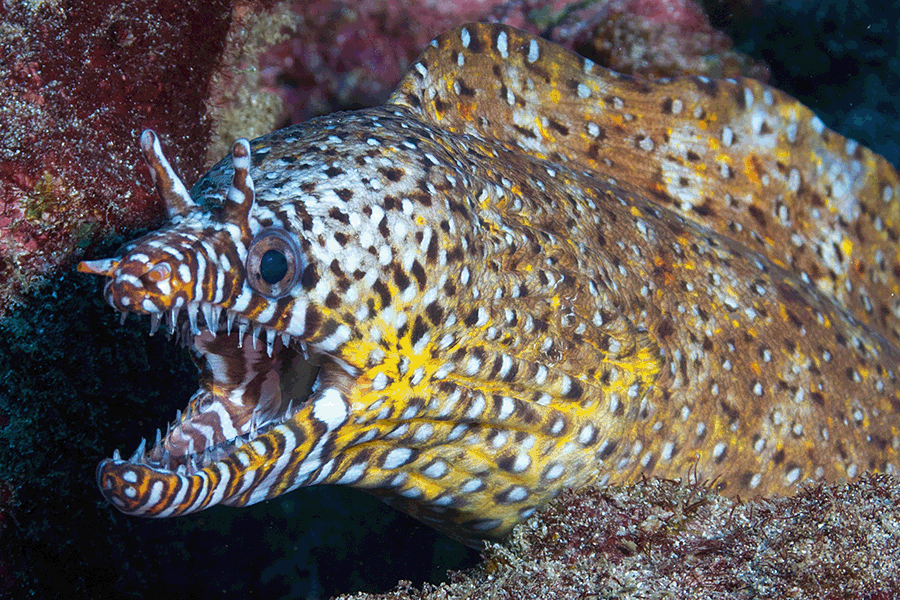
Biodiversity
Compared to the Society Islands (Tahiti and Moorea) Nuku Hiva has less hard corals, but the fish life is extremely abundant and diverse. In fact, scientific studies indicate that Nuku Hiva has more biodiversity than anywhere else in French Polynesia.
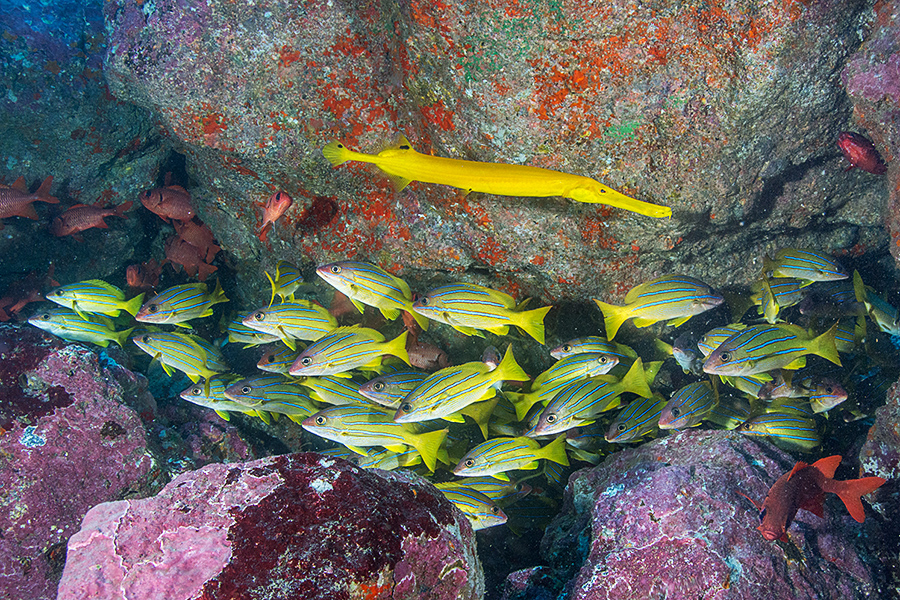
Eagle Rays
I suspect everyone’s favorite dive site was Eagle Ray Point. This spot actually has a far more exotic Marquisan name but it escapes it. Anyway, the site has a resident squadron of spotted eagle rays that (with a little patience) divers can get quite close to while the rays hover motionless at the edge of the vertical reef like enormous birds riding thermals at the edge of a cliff.
Incidentally, geneticists recently divided spotted eagle rays into three distinct species: Atlantic spotted eagle rays – Aetobatis narinari, Eastern Pacific eagle rays – A. laticeps, and this one, the Indo-Pacifc Spotted Eagle Ray – A. occelatus.
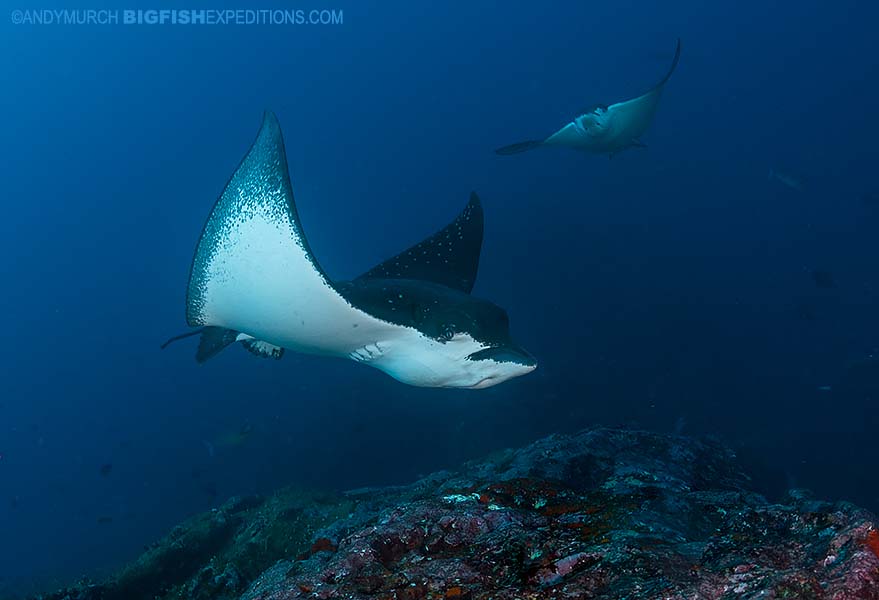
The Shark Cave
Once we got tired of holding position in the surge and strong currents where the eagle rays hang out, we tucked into a protected area where there is a large cave inhabited by twenty or more Grey Reef Sharks.
The cave is fun to explore because – as well as an abundance of sharks – it is filled with bright red/orange squirrelfish and the back of the cave is bristling with lobsters.
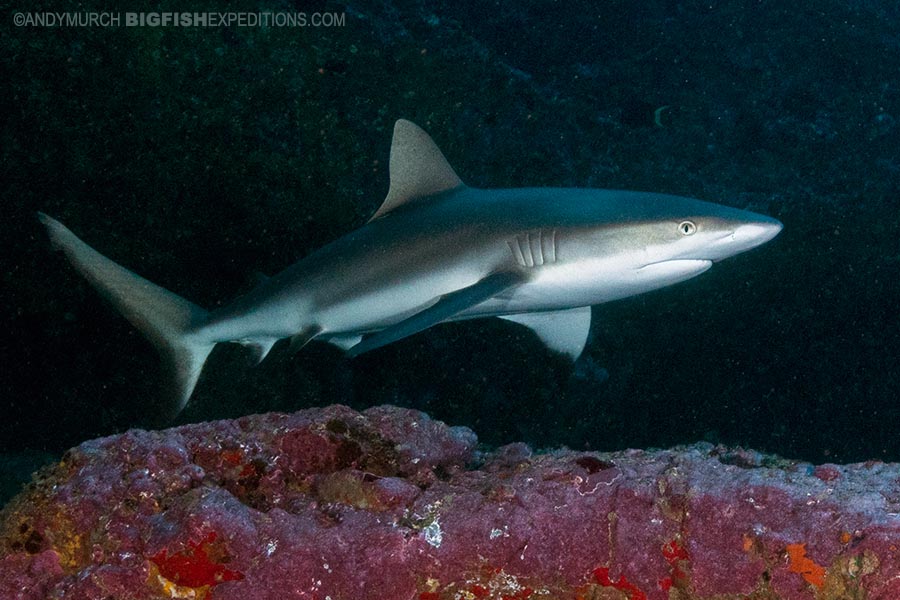
Mantas over Macro!
With so many big animals around, I could not bring myself to switch to a macro lens, even though there were plenty of nudibranchs and brightly coloured crustaceans to focus on.
The manta encounters were especially enjoyable because some of them would hover right in front of us for long periods or swim away only to return for another look.
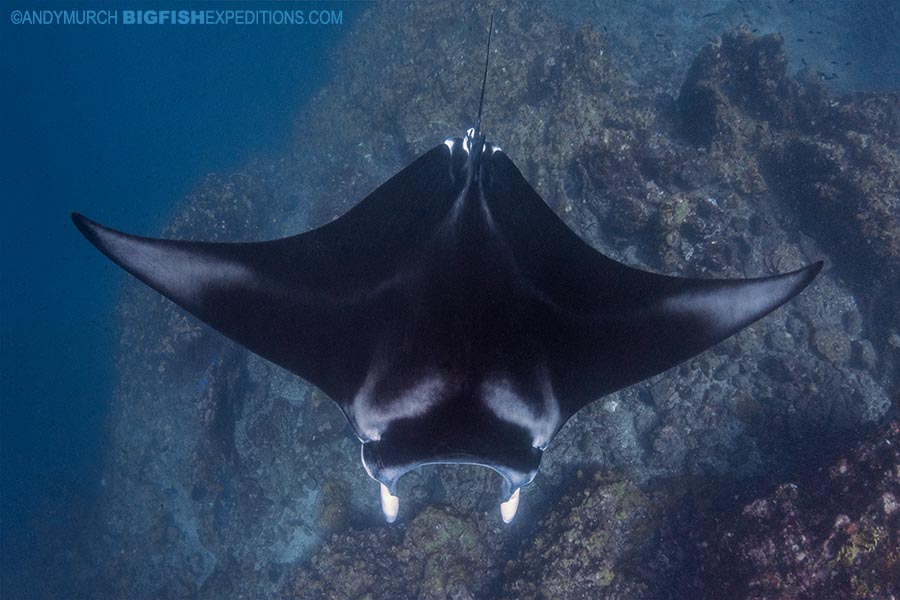
Stingrays
Interestingly, we ran into numerous Tahitian stingrays uncharacteristically approaching us in mid-water. Why they did this I have no idea, because they are quite vulnerable to predation by their toothy cousins when they are away from their sandy natural habitat.
We also saw a handful of enormous blotched rays hugging the substrate. It is hard to accurately estimate their size underwater, but I suspect that some were almost two meters across.
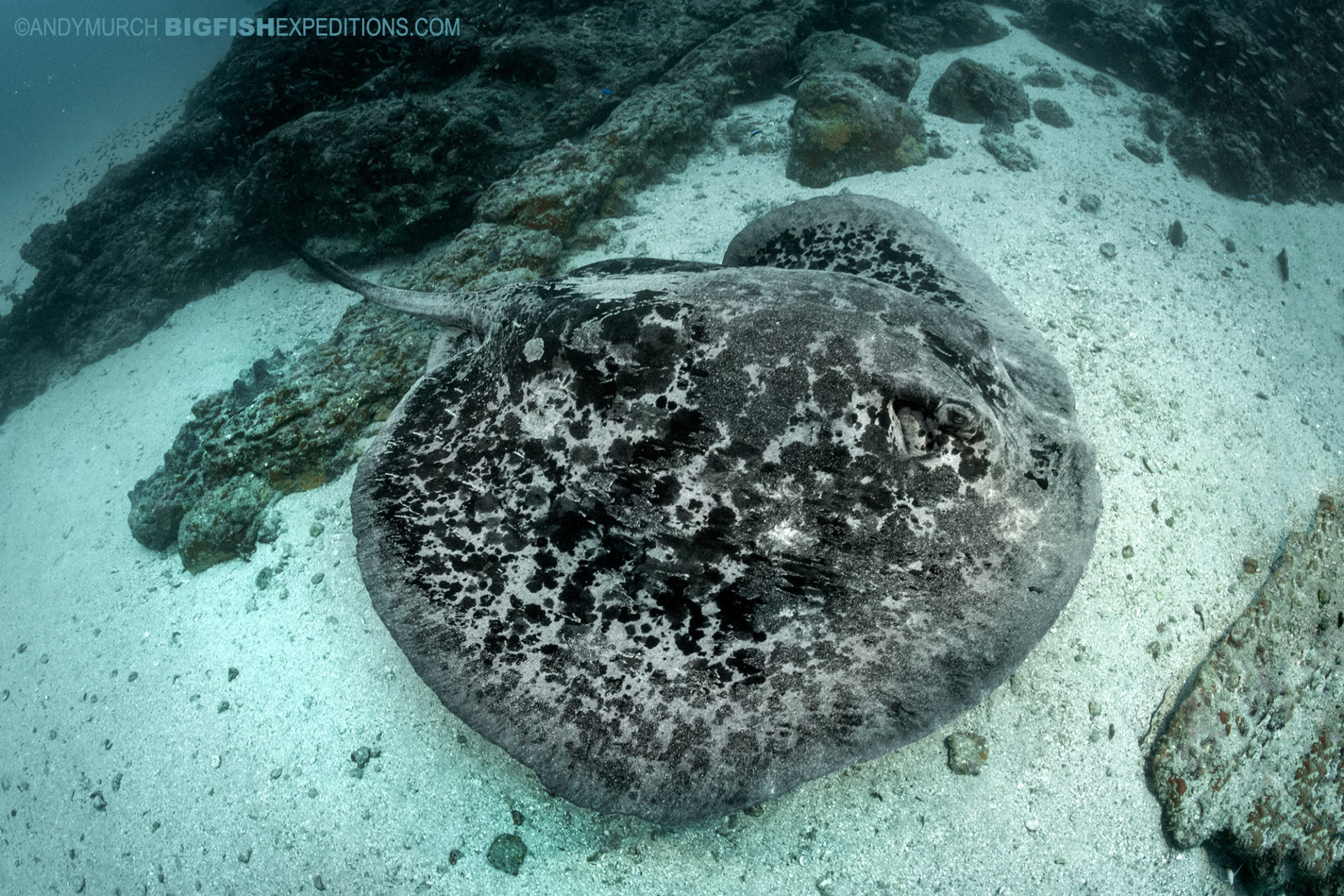
Pre-Trip Shark Diving on Tahiti
Before I wrap up this trip report, I have to quickly mention our stopover in Tahiti. A few of us arrived early in Tahiti to do a little shark diving before flying onward to Nuku Hiva. This gave us access to some different sharks that are rarely seen in the Marquisas.
The shark action at a dive site named White Valley was excellent and included encounters with blacktip reef sharks, reef whitetips, grey reef sharks, and half a dozen huge Sicklefin Lemon Sharks; a Pacific version of the Atlantic lemon shark that we often see in Florida and the Bahamas. The two species look very similar but as their name suggests, sicklefin lemon sharks have slightly more falcate dorsal fins. Plus, they have a tiny black spot on the tip of their noses that is absent on their Atlantic cousins.
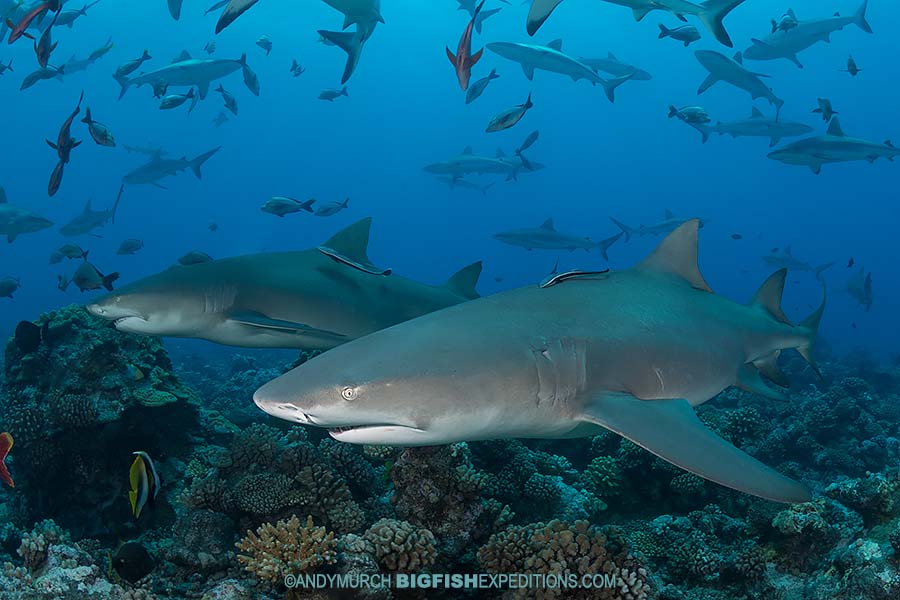
A Return Visit
Between the elasmobranch (shark and ray) encounters, melon-headed whales and healthy reef life, it was a great trip so we are planning to return.
There are very few travel companies that visit Nuku Hiva, so if you would like to explore this special spot, we are heading back in late Jaanuary 2022. We only take five guests on this one, so space is extremely limited. If you’re looking for an exotic adventure far away from the maddening crowds, please let me know. I look forward to showing you this remote island paradise. Dive Nuku Hiva 2022
